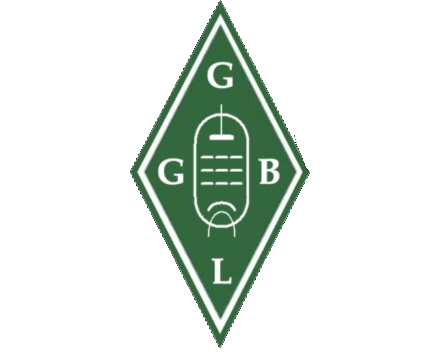Biological Effects from the 1A21 Tube as Compared to Conventional X-rays
The following article will discuss the differences in biological outcomes in certain plant species, when irradiated with emanations projected from the 1A21 Desmitron vacuum tube, as well as from a conventional cold cathode X-ray tube. The objective of the observations made herein, provides evidence to suggest that the emanations from the 1A21 tube lack the ability to inflict biological damage.
In regards to previous tests conducted under the same objective, irradiation Test 1 and Test 2 provide successful attempts in demonstrating the non-existent adverse effects of emanating rays from the tube, as imposed upon plants and bacteria.
For the purpose of accurate experimental replication, the following tests in this article will consist of the same procedures as employed in Test 2, whereby multiple irradiated samples of radish are used. This also includes the same methods of quantifying radiation exposure, as used previously.
Figure one, displays the configuration of the test subjects, with indications on each pot stating their exposure in Roentgens (R). Hence, from left to right, 100 Roentgens, 40 Roentgens, 26 Roentgens, 10 Roentgens, and control. Each pot was given approximately four ounces of water every other day, furnishing an equal temperament of germination.
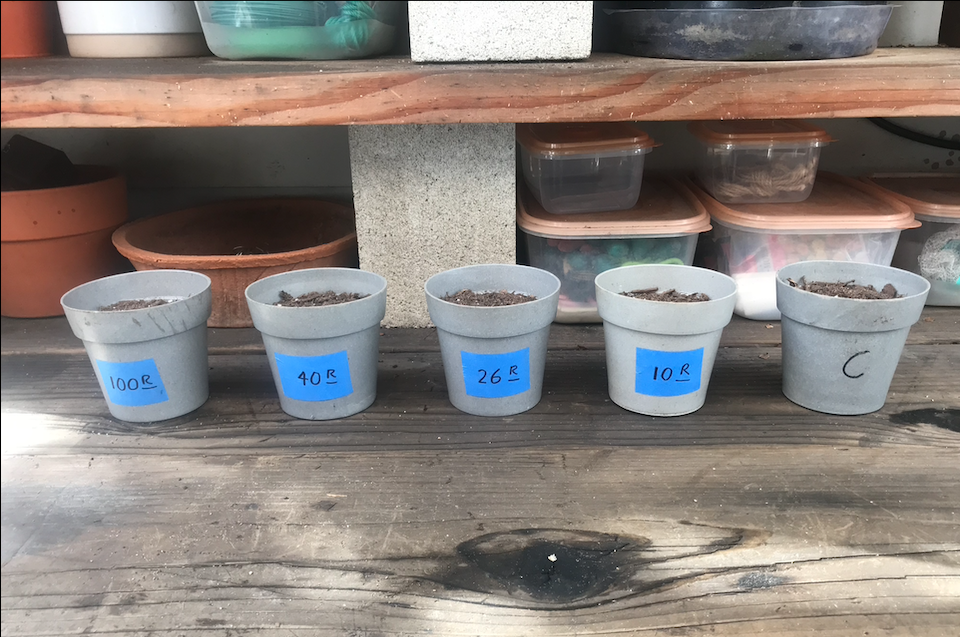
So that to eliminate any possible errors, three trials were executed whereby the same configuration as displayed in the figure above was employed.
The following figures graphically depict the number of germinated sprouts per pot, as indicated by the color coded key.
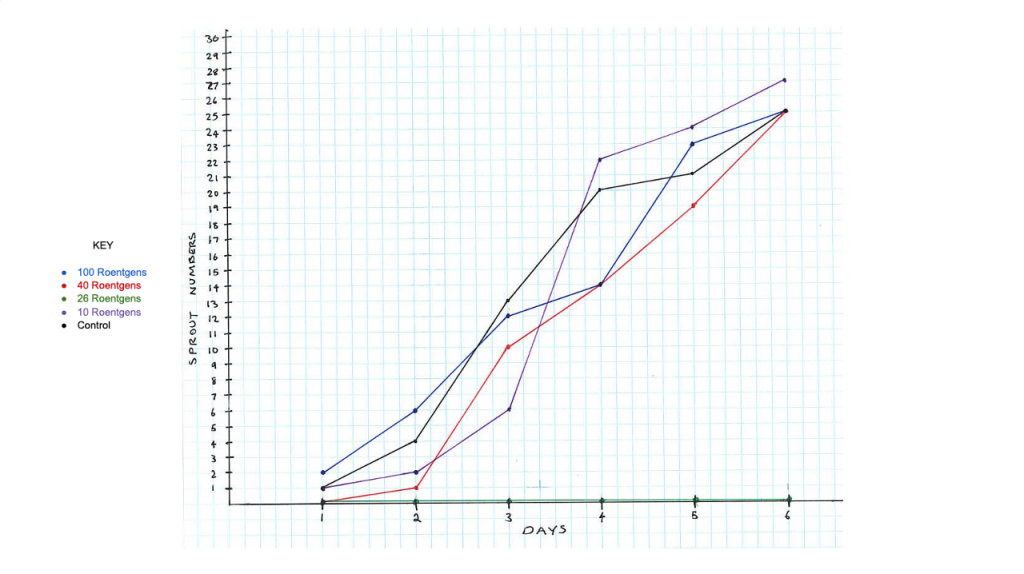
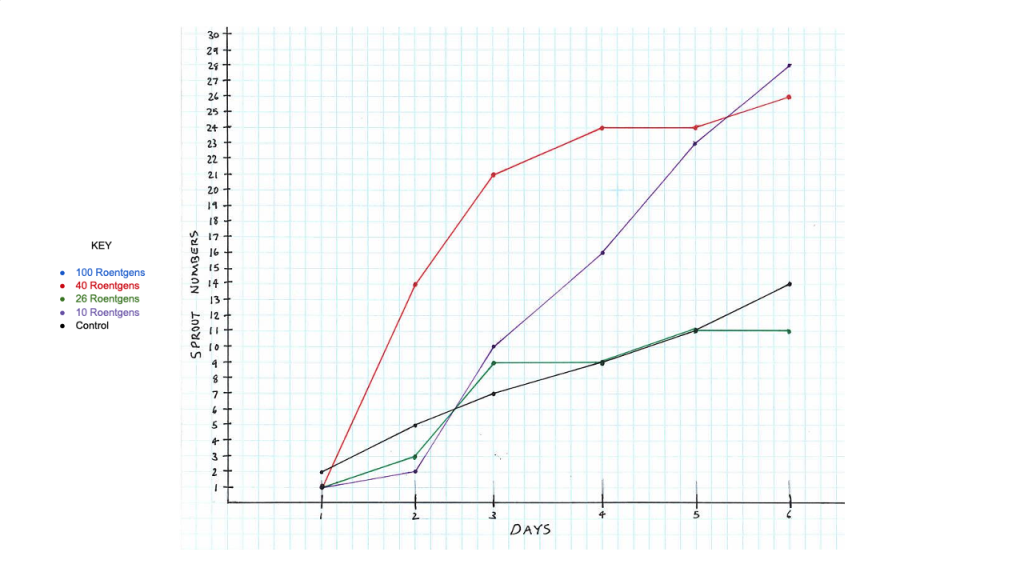
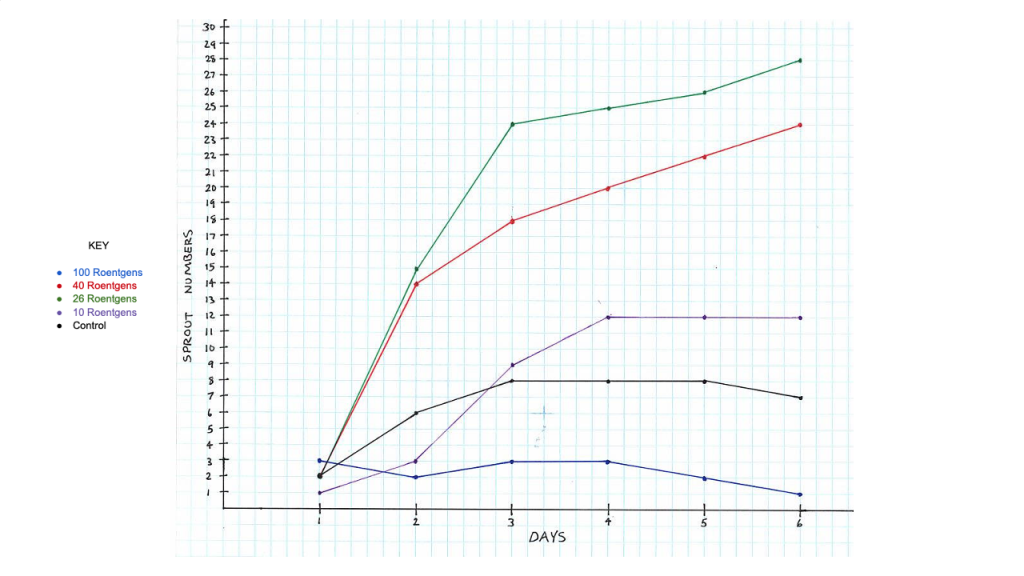
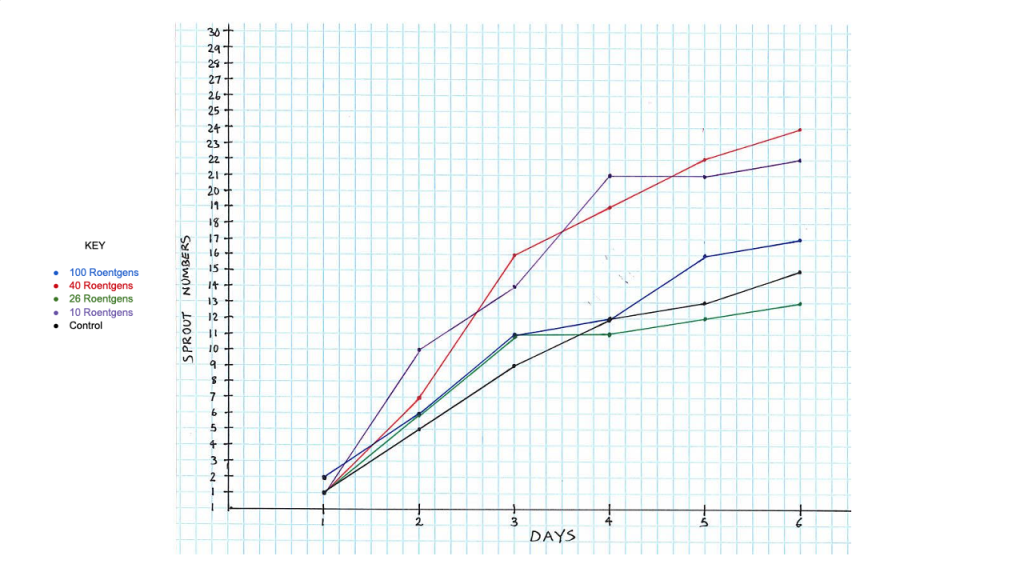
Thus far, the analyzed data of total sprout number per irradiated sample, does not deviate significantly from that of the control. Considering the maximum absorbed dose of 100 Roentgens, that is, proving to be quite considerable, there exists a lack of mutation in the outcome of germination.
In terms of growth height to that of exposure and time, the following figures follow the same outline as shown above.
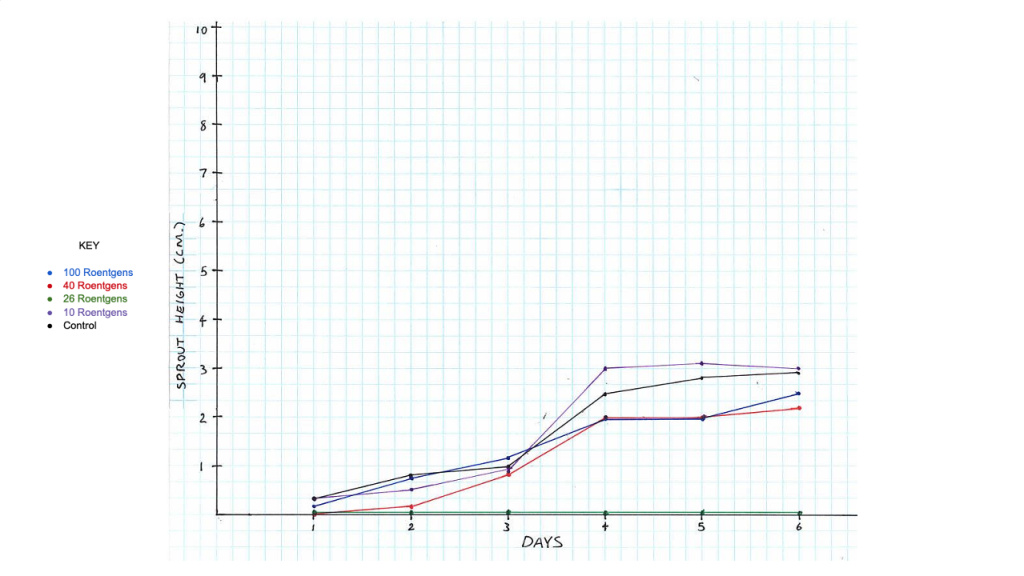
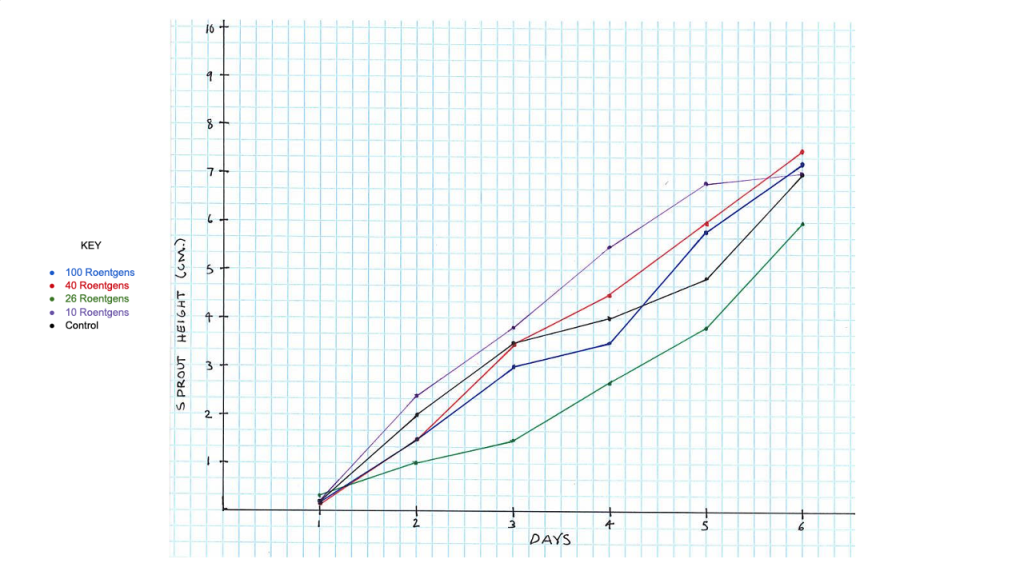
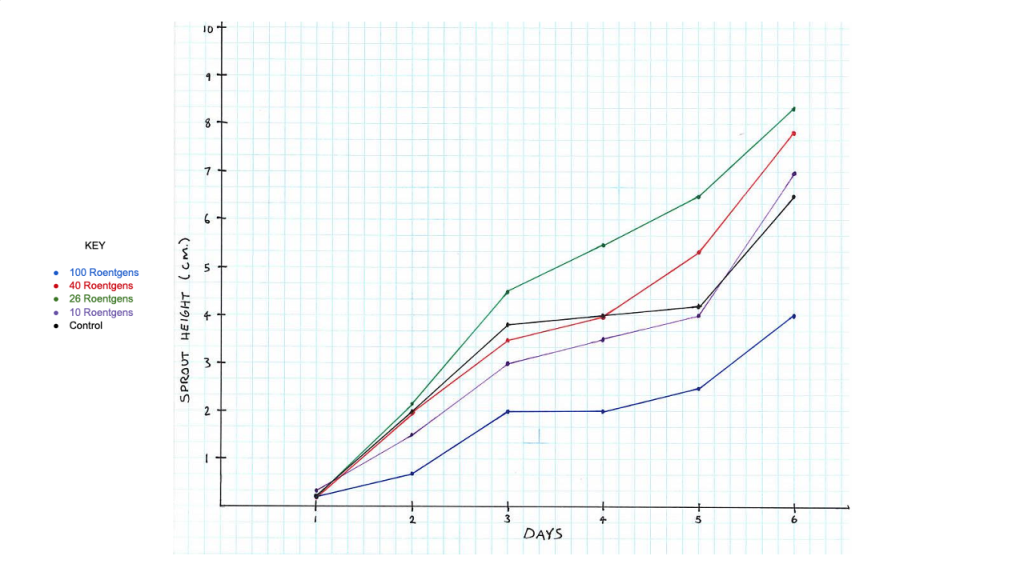

As compared to figures two through five, the same lack in observable mutation is likewise evident in growth height figures six through nine. Referencing the analyzed average of data for both growth height and sprout number, a non existent trend in substantial deviation to that of the control is present.
Comparing the results as outlined thus far to that of conventional ionizing radiations from a Cold Cathode X-ray tube, the need for similar exposure rate must be facilitated to produce a viable comparison between that of the two types of vacuum tubes. In order to produce ionizing rays of typical adverse character, a cold cathode X-ray tube possessing a Tungsten anode and Aluminum cathode was maticulously manufactured by hand, as shown in figure 10.

This X-ray tube was exhausted to a degree of 10⁻⁵ Torr, and may handle a potential difference of 200 kilovolts DC. For the purpose of keeping longevity in the tube, a supplied potential of 100 kilovolts was maintained throughout its operation. This gave a semi-constant exposure of roughly 66 Roentgens per hour at a distance of one inch away from the center of the tube. With this value, a duration of 90 minutes will approximately yield an exposure of 100 Roentgens, equivalent to the highest exposure received by the previous test trials. By adhering to the set exposures as outlined in said trials, the following results were obtained using the same reddish species.

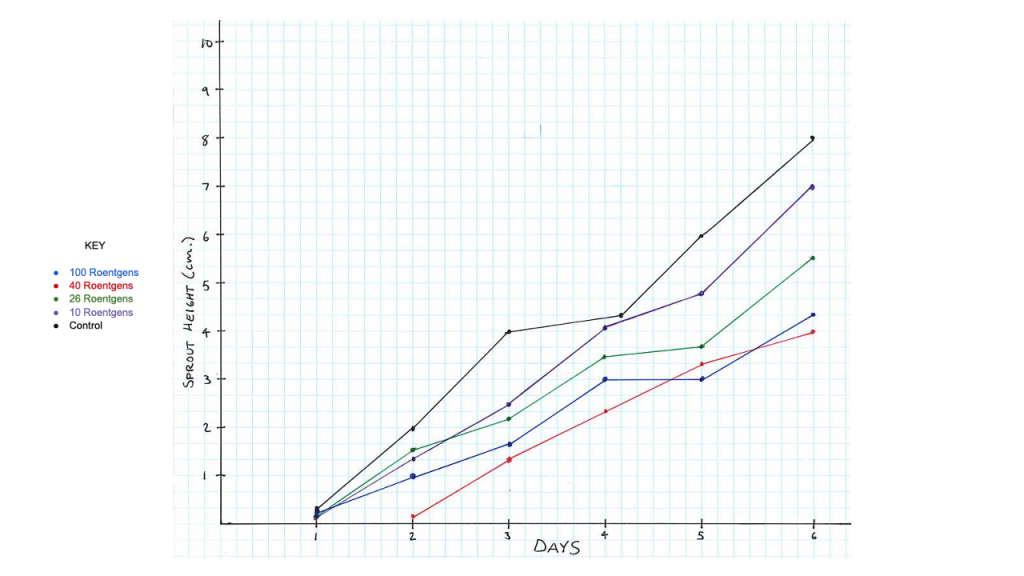
As compared to observed data collected from the set of trials involving the emanations from the 1A21 tube, the Cold Cathode X-ray tube as used above demonstrates a substantial difference in the outcome of germination height and sprout quantity, indicating mutation to some degree. Granted that a constant level of exposure was maintained throughout the trials, a noticeable change in overall radish behavior became evident when the source of radiation was produced by a conventional X-ray tube. Comparing the set of averages for growth number of the 1A21 tube trial to that of growth number for the conventional X-ray tube, a drastic difference may be observed when inspecting the behavior of samples with regard to the control (black graph). This difference in behavior is also applicable to that of germination height for both tests involving the 1A21 and Cold Cathode X-ray tube.


From these observations, it may be reasoned that the 1A21 tube appears to be lacking the ability to inflict harm upon organic substances, while displaying similar characteristics to that of typical X-rays, that is, in terms of radiographic imaging. The comparison outlined thus far in this article, provides greater detail into the biological effects, if any, from projections produced by the 1A21 Desmitron tube.
Share this:
- Click to share on X (Opens in new window) X
- Click to share on Facebook (Opens in new window) Facebook
- Click to share on Pinterest (Opens in new window) Pinterest
- Click to share on LinkedIn (Opens in new window) LinkedIn
- More
- Click to share on Reddit (Opens in new window) Reddit
- Click to share on WhatsApp (Opens in new window) WhatsApp
- Click to share on Mastodon (Opens in new window) Mastodon
- Click to share on Telegram (Opens in new window) Telegram
- Click to share on Tumblr (Opens in new window) Tumblr
- Click to share on Nextdoor (Opens in new window) Nextdoor
- Click to share on Pocket (Opens in new window) Pocket
- Click to email a link to a friend (Opens in new window) Email
